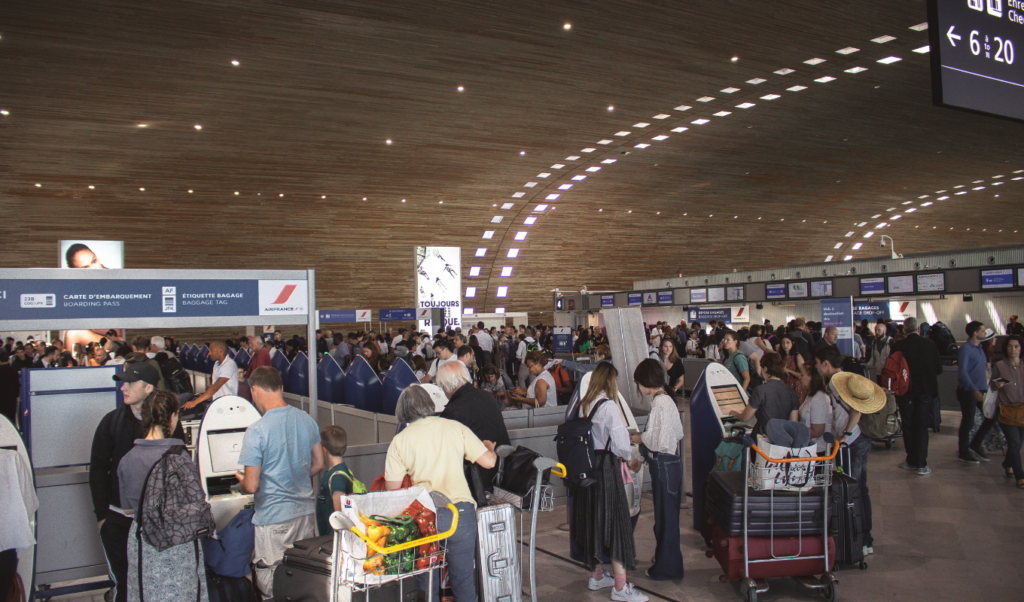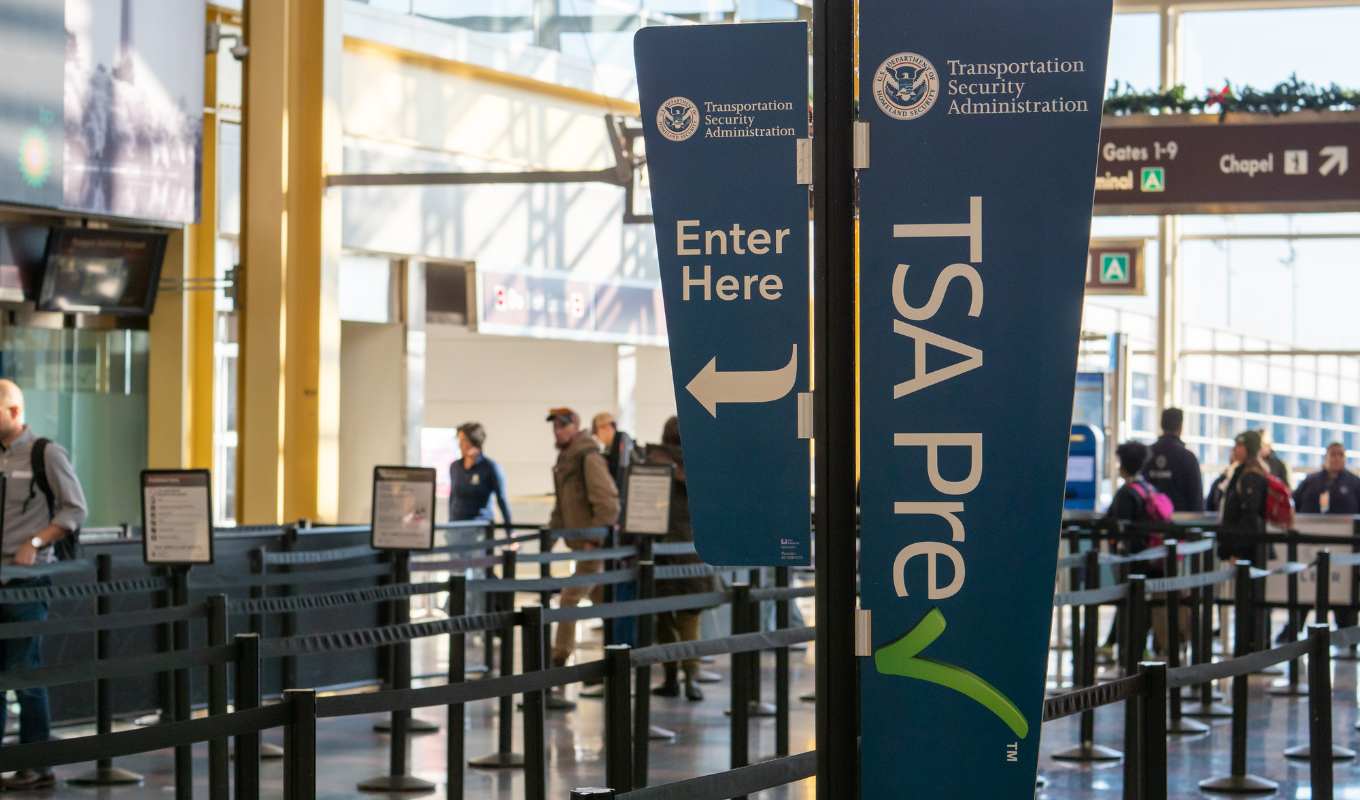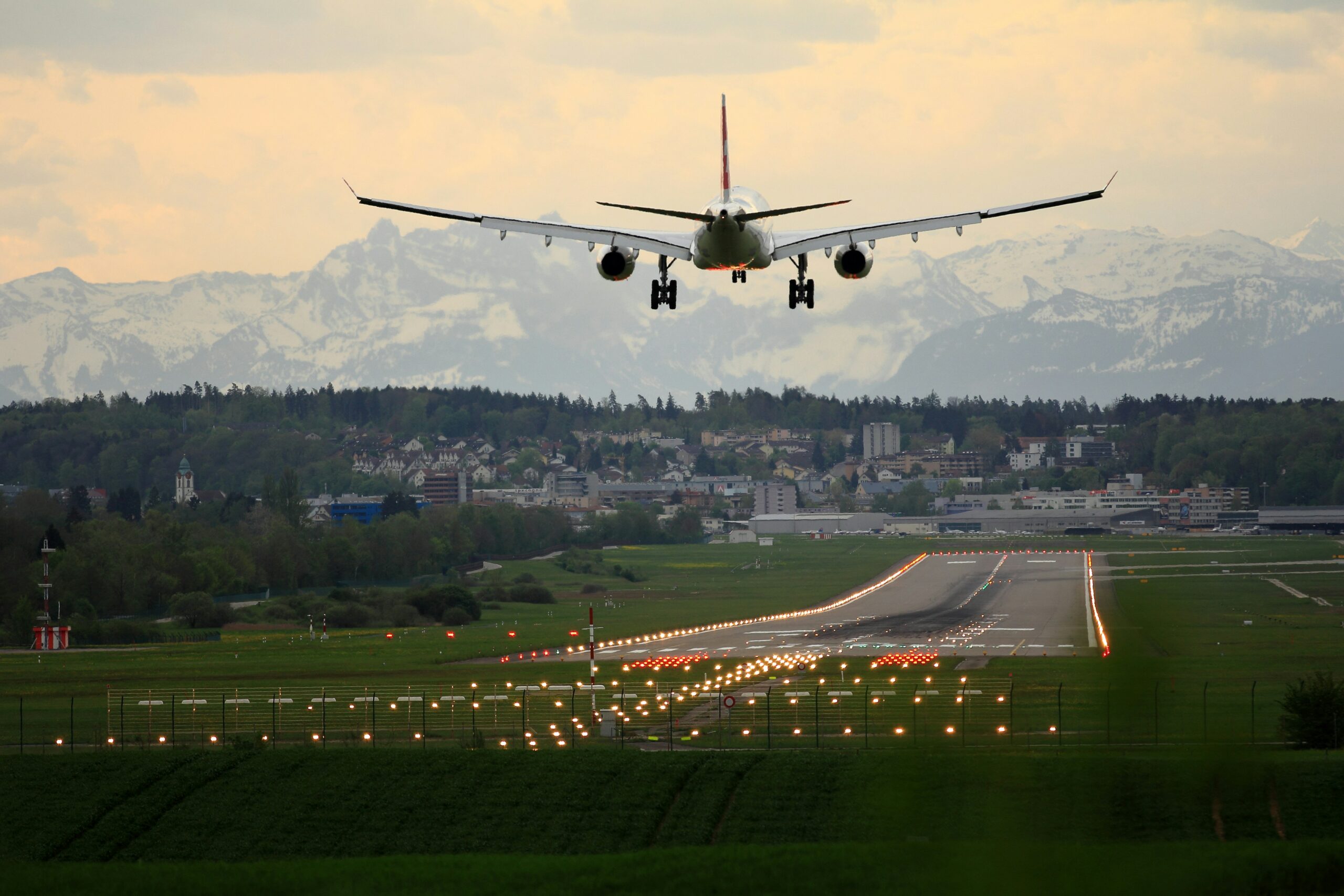Want to save time at airports? Global Entry and TSA PreCheck are two programs that help travelers breeze through security and customs. Here’s a quick breakdown:
- TSA PreCheck: Perfect for domestic travelers. It speeds up security checks at U.S. airports – no need to remove shoes, belts, laptops, or liquids. Costs $78–$85 for 5 years and approvals are quick (3–5 days).
- Global Entry: Ideal for international travelers. It offers faster customs clearance when re-entering the U.S. and includes TSA PreCheck. Costs $120 for 5 years, but approvals can take months.
Quick Comparison
| Feature | TSA PreCheck | Global Entry |
|---|---|---|
| Best For | Domestic travelers | International travelers |
| Cost (5 Years) | $78–$85 | $120 |
| Approval Time | 3–5 days (up to 60 days max) | 2 weeks–12 months |
| Includes TSA PreCheck | Yes | Yes |
| Application Process | Simple, quick appointment | More steps, in-person interview |
| Coverage | 200+ U.S. airports | U.S. customs at international hubs |
Bottom line: Choose TSA PreCheck for domestic trips or if you need fast approval. Opt for Global Entry if you travel internationally often – it’s worth the extra cost and effort.
How Each Program Works
Global Entry and TSA PreCheck simplify different aspects of your travel experience. Each program operates at distinct stages of your journey and serves specific purposes.
What Global Entry Does
Global Entry makes returning to the United States from international trips much smoother. Instead of standing in long customs and immigration lines, you can head straight to automated kiosks that handle the process electronically.
At these kiosks, you’ll scan your passport or resident card, verify your fingerprints, and complete your customs declaration digitally. Once done, you’ll receive a receipt directing you to baggage claim – skipping the standard lines entirely. Some airports even let you complete this process using the Global Entry mobile app on your smartphone.
One added perk? Global Entry membership includes TSA PreCheck, giving you access to expedited security screening for both domestic and international legs of your trip. This combination of benefits ensures a faster, more seamless travel experience.
However, it’s worth noting that Global Entry members can still be subject to additional screening. Violating the program’s terms could also lead to your membership being revoked.
What TSA PreCheck Does
TSA PreCheck speeds up the security process at U.S. airports, offering access to special, quicker lanes with fewer restrictions. The program serves over 20 million members at more than 200 airports nationwide.
When you enroll in TSA PreCheck, you’re assigned a Known Traveler Number (KTN). Adding this number to your flight reservations signals to airlines and TSA that you’re a low-risk traveler. Your boarding pass will then display “TSA PreCheck” or “TSA Pre✓” to indicate your status.
At the airport, the benefits are clear: you can keep your shoes, belts, and light jackets on, and there’s no need to remove electronics or liquids from your bag. In April 2024, 99% of TSA PreCheck passengers spent less than 10 minutes in security lines. Plus, children 12 and under can use TSA PreCheck lanes with an accompanying adult, as long as it’s noted on the child’s boarding pass.
When to Use Each Program
The choice between Global Entry and TSA PreCheck depends on how often and where you travel.
If you frequently take international trips – let’s say four or more times a year – Global Entry is a smart investment. At $120 for a five-year membership, it breaks down to about $24 annually, making it a cost-effective option for frequent international travelers. It’s particularly useful for business trips, family visits abroad, or vacations, helping you dodge those long customs lines upon your return to the U.S.
For travelers who primarily stick to domestic flights, TSA PreCheck offers a simpler and more affordable solution. With fees ranging from $76.75 to $85 for five years, it’s tailored to expedite airport security for domestic trips. Its straightforward application process and wide network of enrollment centers make it accessible for most people.
Proximity to enrollment centers is another factor to consider. If you don’t live near a Global Entry center, don’t have a passport, or rarely travel internationally, TSA PreCheck might be the better fit for your needs.

Who Can Apply and How
Global Entry and TSA PreCheck have distinct eligibility criteria, application steps, and processing timelines. Understanding these differences can help you decide which program aligns with your travel needs and how quickly you can start enjoying hassle-free travel.
Application Requirements
Both programs are open to U.S. citizens, U.S. nationals, and lawful permanent residents, but Global Entry expands its eligibility to include citizens from select countries such as Argentina, Australia, Brazil, Germany, Japan, Mexico, Singapore, South Korea, Switzerland, and the United Kingdom.
Global Entry has no minimum age requirement, but applicants under 18 need consent from a parent or legal guardian. TSA PreCheck follows a similar rule, requiring guardian approval for minors.
It’s important to note that providing incomplete or false information, or having a criminal record, may disqualify you from either program. Past violations involving customs, immigration, or agriculture regulations could also hurt your chances. Even minor infractions might affect your approval, so it’s worth carefully reviewing your history before applying.
Next, let’s take a closer look at the application process for each program.
Application Process
Both Global Entry and TSA PreCheck require an online application to start, but the in-person requirements and overall complexity differ between the two.
For TSA PreCheck, the process is straightforward. You’ll begin with a quick online application that takes just a few minutes. Once submitted, you’ll need to schedule an appointment at one of the many enrollment centers nationwide. The in-person visit includes fingerprinting and document verification, and it’s typically brief.
Global Entry, on the other hand, involves a few extra steps. After completing the online application and receiving conditional approval, you must attend a more detailed in-person interview. During this interview, officers will review your travel history and verify your information. If you’re conditionally approved and traveling internationally, you can take advantage of Global Entry’s Enrollment on Arrival program to complete your interview upon landing, which can save weeks or even months of waiting.
One key difference is accessibility. TSA PreCheck offers a larger network of enrollment centers, making it easier to find a convenient location. In contrast, securing a Global Entry interview can be challenging. Some applicants use tools like Global Entry Spotter, a service that monitors appointment availability and sends alerts when slots open up.
Once your in-person appointment is done, the time it takes to get approved varies significantly between the two programs.
How Long Approval Takes
If you’re looking for speed, TSA PreCheck is often the faster option. Most applicants receive approval within 3–5 days of their in-person appointment, though in some cases, it can take up to 60 days.
Global Entry requires more patience. While around 80% of applications are approved within two weeks, some can take up to 12 months or longer. The official processing window is up to six months, but delays often stem from the difficulty of scheduling an interview rather than the application review itself. For cases requiring additional scrutiny, manual processing may extend the timeline to 12–24 months.
If you’re in a rush, TSA PreCheck might be your best bet. However, for frequent international travelers, starting your Global Entry application well ahead of time can lead to a smoother travel experience in the long run.

Program Costs and Payment Options
Knowing the costs involved in each program can help you decide which option aligns best with your travel habits.
Program Fees
Global Entry costs $120 for a five-year membership, while TSA PreCheck fees range from $78 to $85 for the same period, depending on the enrollment provider. Renewing TSA PreCheck online typically lowers the cost to between $58.75 and $70.
While TSA PreCheck is generally the more affordable option, Global Entry includes TSA PreCheck benefits. This means you get expedited security screening for domestic flights and faster customs processing for international travel. If you travel abroad even occasionally, Global Entry might offer better overall value.
Keep in mind, applying for both programs separately could cost over $200 for five years. Since Global Entry automatically includes TSA PreCheck, opting for Global Entry eliminates the need for a separate TSA PreCheck application.
Family and Child Policies
The way these programs handle family enrollment can significantly affect your overall expenses.
TSA PreCheck offers great value for families. Children 12 and under can use TSA PreCheck lanes when traveling with an enrolled parent. Teens aged 13–17 can also join if the TSA PreCheck indicator appears on their boarding pass. This means one TSA PreCheck membership (around $78 to $85) could cover your entire family’s domestic travel needs.
Global Entry, on the other hand, requires every family member to enroll individually. However, there’s a perk for families: children under 18 can apply for Global Entry for free if a parent or legal guardian is already a member or applies at the same time. For example, in a family of four with two children under 18, TSA PreCheck would cost $160–$170 for the parents, while Global Entry would cost $240 for the parents – with no additional fees for the children. This makes Global Entry an excellent option for families who travel internationally.
If you’re a Dollar Flight Club member and frequently snag international flight deals, combining Global Entry with credit card fee reimbursements can make the investment even more worthwhile.
Program Benefits and Drawbacks
Let’s break down the real perks and potential downsides of each program.
Airport and Location Coverage
TSA PreCheck is available at over 200 airports across the U.S., offering extensive domestic coverage. This includes major hubs like Los Angeles International Airport as well as smaller regional airports.
Global Entry, on the other hand, is geared toward international travelers. It’s offered at major U.S. airports equipped with international customs facilities. While its network isn’t as extensive as TSA PreCheck’s, Global Entry comes with the added perk of faster processing at land borders with Mexico and Canada.
The enrollment process also varies between the two. TSA PreCheck boasts more than 600 enrollment centers nationwide, making it easier to find a location nearby. Global Entry, however, has fewer enrollment sites, which might require some extra travel for your interview. Despite this, the benefits for international travelers often make the extra effort worthwhile.
For Dollar Flight Club members who frequently score international travel deals, Global Entry’s coverage at major departure hubs can be a smart choice – even if its network isn’t as expansive as TSA PreCheck’s. That said, even the best systems aren’t without their hiccups.
Common Issues and Limitations
Both programs come with their own set of challenges. For TSA PreCheck, expedited screening isn’t guaranteed every time. Occasionally, travelers may be randomly selected for standard screening, and during peak travel times, TSA PreCheck lines can sometimes be longer than regular ones.
Global Entry has its own hurdles. About 3–5% of the 30,000 monthly applicants are denied. Common reasons for rejection include criminal records, immigration violations, or errors in the application. Keep in mind, the $120 application fee is non-refundable, even if your application is denied.
Both programs can also involve additional screenings. If this happens repeatedly, you can file an inquiry through DHS TRIP. Being aware of these potential issues can help you decide which program aligns best with your travel habits.

Which Program to Choose
Deciding between Global Entry and TSA PreCheck comes down to how often you travel and whether your trips are mostly international or domestic.
Go for Global Entry If:
- You travel internationally at least four times a year. Paying the $120 fee for Global Entry is worth it when you consider the time saved at customs in busy airports like JFK and LAX.
- You want both TSA PreCheck and expedited customs clearance. Global Entry includes TSA PreCheck, giving you dual benefits.
- You frequently return through major international airports. Global Entry is perfect for navigating crowded customs areas quickly when re-entering the U.S.
- You’re a frequent flyer or business traveler. If you’re often on the move for work or leisure, the combined perks of faster security and customs clearance make Global Entry a smart choice.
If most of your trips are within the U.S., TSA PreCheck might be the better fit.
Opt for TSA PreCheck If:
- You primarily fly domestically. TSA PreCheck operates in over 200 U.S. airports, and 99% of passengers get through security in under 10 minutes.
- You take fewer than four international trips per year. With a lower application fee – ranging from $77.95 to $85 – TSA PreCheck is a more budget-friendly option for those who rarely travel abroad.
- You want faster approval and easier access to enrollment centers. TSA PreCheck applications are typically approved within 3 to 5 days, and with over 600 enrollment centers nationwide, scheduling an appointment is straightforward.
- You’re looking for a lower fee and affordable renewal. TSA PreCheck’s cost makes it an economical choice for domestic travelers.
- You prefer a simple application process. The process involves a quick 10-minute appointment for fingerprinting and documentation, unlike Global Entry’s more extensive interview requirements.
Final Decision Guide
If you travel internationally four or more times a year, Global Entry is likely your best bet. On the other hand, if most of your trips are domestic, TSA PreCheck might be the better fit. This basic distinction helps frame the decision, but there’s more to consider, like time savings, costs, and the overall application process.
Global Entry can save you 40+ minutes on every international trip, and while it costs slightly more than TSA PreCheck, the added perks make it worth considering. TSA PreCheck, meanwhile, is perfect for domestic travelers, offering expedited security screening at over 200 U.S. airports. Your choice ultimately depends on your travel habits and how much value you place on convenience and efficiency.
The application processes for these programs differ quite a bit. Global Entry requires extra steps, such as submitting a passport and attending an in-person interview. While this might feel like a hassle, the long-term benefits are well worth it for frequent international travelers. TSA PreCheck, with its simpler application and more accessible enrollment centers, is ideal for those who stick to domestic flights.
Don’t overlook the possibility of fee reimbursement. Many premium credit cards cover the cost of these programs entirely, so check your card’s benefits to see if you can save.
When deciding, focus on where you actually travel, not where you think you might go someday. If your passport rarely sees the light of day, TSA PreCheck is probably the better value. But if international customs lines are a regular part of your travel experience, the broader benefits of Global Entry make it a smart investment.
And here’s a tip: discounted international flight deals from programs like Dollar Flight Club could help you hit that four-trip threshold sooner than you think. Even if you’re not a frequent international traveler now, Global Entry might still be the better long-term choice. By weighing time savings, cost considerations, and the complexity of the application process, you’ll be able to pick the program that fits your travel needs best.

FAQs
What should I consider when deciding between Global Entry and TSA PreCheck?
When choosing between Global Entry and TSA PreCheck, it really comes down to how and where you travel. If you’re someone who frequently flies internationally, Global Entry is a great choice. It not only speeds up customs processing when you return to the U.S., but it also includes all the perks of TSA PreCheck for domestic flights. The cost? $100 for a five-year membership.
For those who stick mostly to domestic travel, TSA PreCheck might be all you need. It allows for quicker security screening at U.S. airports and costs between $78 and $85 for five years. So, if international trips are rare for you, TSA PreCheck should do the job. But if you find yourself leaving the country several times a year, Global Entry offers more bang for your buck.
What’s the difference in the application process for Global Entry and TSA PreCheck, and what should you expect?
The steps, fees, and processing times for applying to Global Entry and TSA PreCheck are quite different. If you’re considering Global Entry, you’ll need to start by creating an account on the Trusted Traveler Programs (TTP) website. From there, complete an online application and pay a non-refundable $120 fee. After submitting your application, you’ll go through a background check and schedule an in-person interview at a Global Entry Enrollment Center. Keep in mind, processing can take up to 90 days or even longer, so plan well in advance.
For TSA PreCheck, the process is more straightforward and quicker. Start by pre-enrolling online, pay an $85 application fee, and then visit an enrollment center to provide your fingerprints and necessary documents. Most applicants hear back within a few weeks.
Both programs require a background check, but Global Entry offers the added benefit of TSA PreCheck. This makes Global Entry a better option for frequent international travelers who want the convenience of expedited security both at home and abroad.
Can I use credit card benefits to cover the cost of Global Entry or TSA PreCheck?
Many credit cards provide statement credits to cover the application fees for programs like Global Entry or TSA PreCheck. Typically, these cards reimburse up to $100 for Global Entry and $85 for TSA PreCheck every four to five years.
This perk can significantly reduce or even eliminate the cost of these programs, making your travel experience smoother and easier on your wallet.










